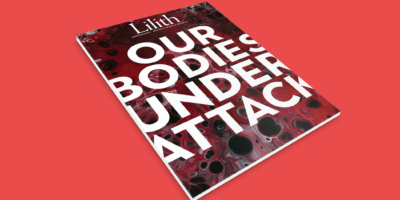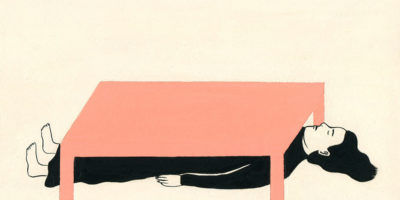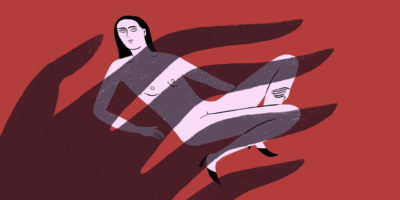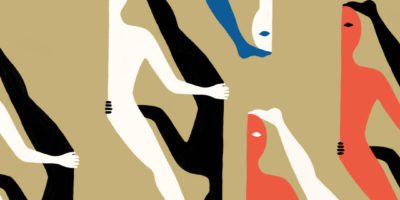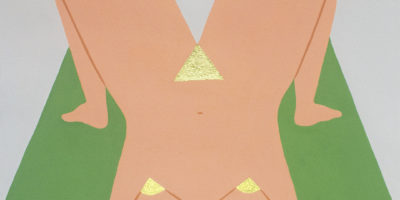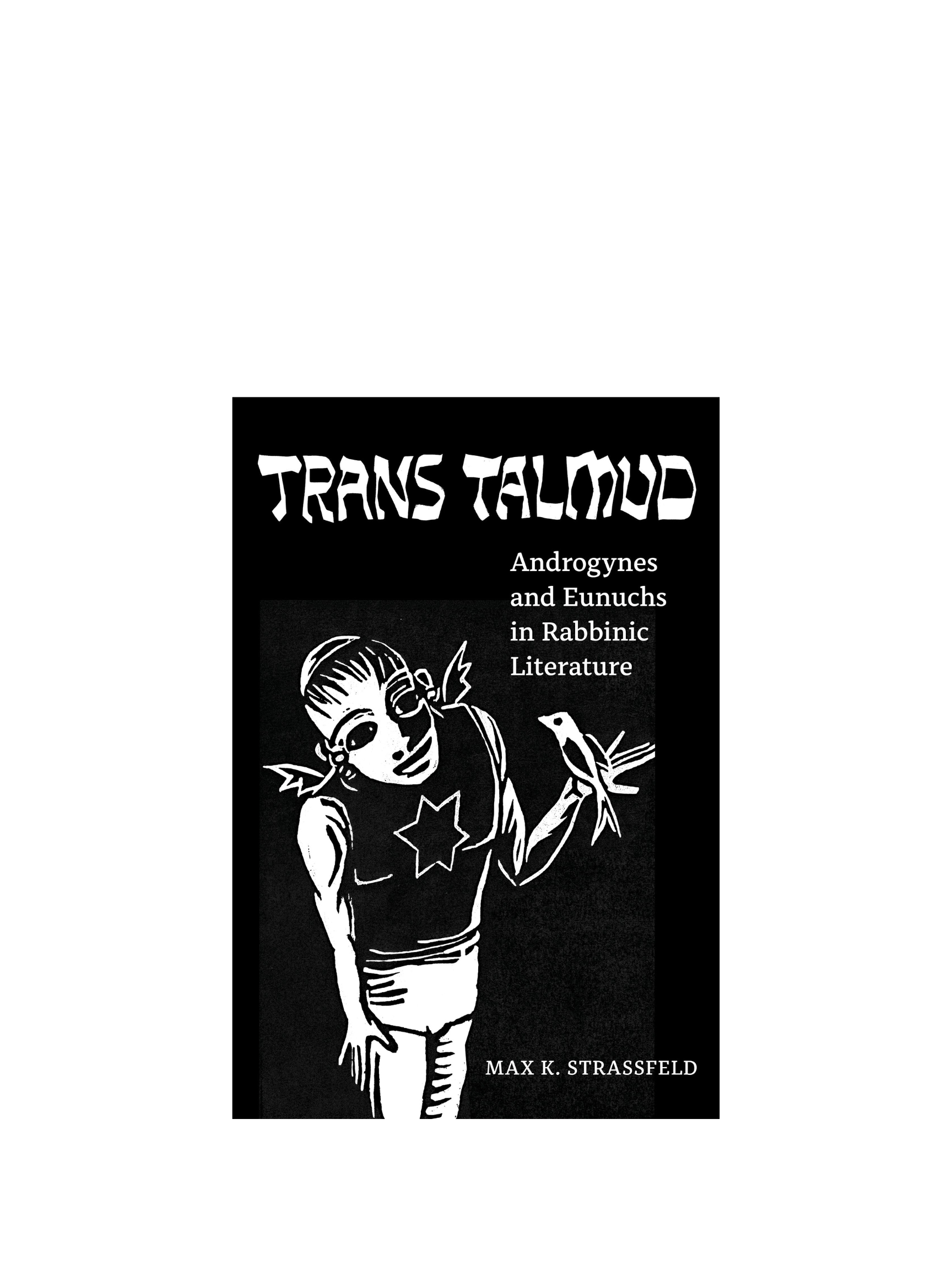
How The Talmud Can (and Can’t) Teach Gender
So far in 2022, there have been over 132 anti-trans bills introduced in over 30 U.S. states. What does this have to do with Talmud and Jewish law? “A lot,” trans scholar of rabbinics Dr. Max Strassfeld would likely reply. Many queer and trans scholars and activists argue it’s Christian dominance and colonialism that have erased long-held ideas that sex and gender contain expressions beyond the binary. Reclaiming those more expansive ways of thinking has become an important mission: seeking to build a more liberated future by revealing the past.
Strassfeld’s Trans Talmud: Androgynes and Eunuchs in Rabbinic Literature, published this April by University of California Press [$95.00], is an essential contribution to this unfolding project. And it’s much more than that.
A brief discussion of sex and gender beyond binary categories of “male” and “female” in the Mishnah, an early rabbinic text from the second century (Mishnah Bikkurim 4:1), has been held up as evidence of an older wisdom and understanding of gender. This text offers a list of bodies that are neither unequivocally “male” nor unequivocally “female,” and categorizes them into a rabbinic system of legal obligations. As one text reads, “[In the case of the] androgyne, there are ways in which they are like men, there are ways in which they are like women, there are which they are like both men and women, and there are ways in which they are not like men or women” (Tosefta Bikkurim 2:3, translation by Strassfeld). But where some queer and trans folks see this statement and the list that follows as an invitation to locate ourselves in rabbinic history, others view it as an example of troubling rabbinic regulation of bodies. For Strassfeld, it’s fittingly neither…and both. The book dedicates quite a bit of attention to the existence of these categories, deemed “androgynes” and “eunuchs,” who “carve nonbinary space into the tradition.” Each category includes more specific terms that address particular experiences.
Strassfeld is clear throughout Trans Talmud that this translation work is difficult, both in translating language, and in translating experiences across time and space. Strassfeld carefully brings contemporary trans and intersex experiences—along with the creative application of queer, trans, and disability theory—into conversation with rabbinic notions of gender and sex in a way that resists anachronism and keeps each unique experience intact.
Strassfeld points out that despite often being treated as a footnote or parenthetical conversation in discussions of gender/sex in the rabbinic period, this listing of identities that describe people with experiences of sex and gender beyond-the-binary are mentioned in rabbinic literature more than one hundred times. Studying this material is subversive, but for Strassfeld, these are not trans-affirming Jewish texts. I have found in my own teaching that in these texts it is often the rabbis who are demonstrated as the subversive heroes; through their creative reinterpreting of the past, they invite us into a world of subversiveness and reading against-the-grain. Strassfeld asks us to hold more complexity in our approach: the rabbis both acknowledge the existence of gender/sex experiences beyond the binary, and attempt to use halakha as a way to regulate the bodies of those who are neither “male” nor “female.” We find these categories discussed by the rabbis not as an act of radical inclusion, but as an instance of regulation: “When the rabbis absorb eunuchs and androgynes into halakhah, then, they position themselves as experts on sex, with the ability to interpret bodies and assign roles, rituals, and obligations on the basis of that interpretation.”
And yet, these categories of beyond-binary ways of being do exist in our tradition. And through their existence, Strassfeld notes, they occasionally “thwart rabbinic attempts at mapping,” and “actively refuse to cooperate with rabbinic timelines.” Perhaps, then, the subversiveness is found in our own imagining and connecting to these invisible histories.
Trans Talmud concludes with a discussion of “trancestors”, a portmanteau of “trans” and “ancestors.” Strassfeld hesitantes in overtly claiming these expressions of sex and gender beyond-the-binary as useable ancestors, noting that while these expansive people in Jewish text offer a historcal instance of resistance, they are not necessarily models of recoverable trancestors. At the same time, Strassfeld’s work will, for many, lead to the inevitable connection to the categories of sex and gender expression that have been hidden in these sources. Strassfeld cites examples of Jewish scholars, activists, and artists who have “…[drawn] on androgynes and eunuchs to provide proof of existence. In the face of the current drive to argue that trans and intersex people generally, and trans and intersex Jews specifically, should not exist, activists turn to the past to write themselves into history.” In one example, artist Micah Bazant’s zine Timtum: A Trans Jewish Zine (named for a Yiddishised version of the term “tumtum,” one of the beyond-the-binary sex categories found in the Mishnah) offers an image of reclamation, redefining the tumtum as a “sexy, smart, creative, productive, Jewish genderqueer.” In another, Rabbi Elliot Kukla’s thesis “A Created Being of Its Own” offers an invitation to consciously reappropriate the language of tumtum and androgynus, creating what Strassfeld describes as “a textual home within Judaism.”
Put simply, in a world that seeks to erase our history and our bodies, these texts provide images of a past where we may have existed, albeit with complexities.To study Talmud is to dream our past into the future, and to engage in the act of traveling through time accompanied by our ancestors’ voices.
While being cautious to not over-identify with these experiences of androgynes and eunuchs of the past and map ourselves entirely onto these ways of being, we can exist more fully right now by understanding these threads woven into our histories. As queer, trans and nonbinary Jews do the work of consciously creating a usable past, Trans Talmud invites us to do so with more integrity and precision.
—Laynie Soloman is Associate Rosh Yeshiva & Director of Transformative Leadership at SVARA, a traditionally radical yeshiva that empowers queer and trans people to expand Torah and tradition through the spiritual practice of Talmud study.

